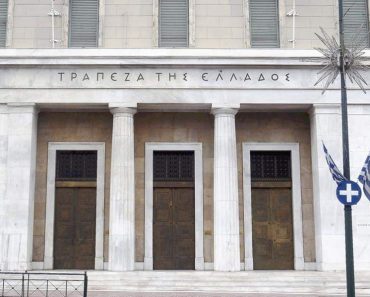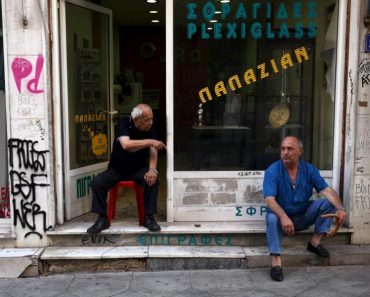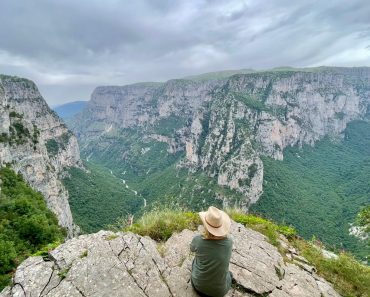NEW YORK — A special lecture presented by two University of Cincinnati scholars and archaeologists, Sharon Stocker, and Jack L. Davis, took place at The Met on Fifth Avenue, inside the Grace Rainey Rogers Auditorium.
Titled ‘Warrior Princes of Mycenaean Greece’, the one-hour lecture on Thursday, November 13, saw the co-investigators and husband-and-wife duo reveal some of their greatest discoveries of gold, silver, bronze, and unique gems which have contributed to reshaping the world’s understanding of Mycenaean civilization.
During the lecture, Stocker and Davis revealed how they took on excavations in 2015 in the ancient city of Pylos, near the site of the ‘Palace of Nestor’ in collaboration with the American School of Classical Studies in Athens, and with approval from the Ministry of Culture in Greece.
The archaeologists then spoke about their archaeological discovery of the 3,500-year-old Griffin Warrior, and his grave, which was found with more than 1,400 objects inside. These included jewels, weapons, armor, and bronze, silver, and gold vessels.

Upon conducting their research, they determined the warrior, who was believed to be quite a powerful man, was estimated to be aged between 30 to 35 years old.
Stocker commenced her address by stating how she felt honored to be presenting her and her husband’s work as part of the Cycladic and Ancient Greek Art Series.
She explained how the discovery of the Griffin Warrior came to be. “On the first day of excavation, we noticed that there were some stones that formed a rough corner on the surface of the earth, and so we put a trench here, one of many, even though we believed that the field was totally eroded, and that we would not find anything,” Stocker said.
“But instead, by day three, we had the outline of what turned out to be the grave of the Griffin Warrior. We thought probably that it had been looted in antiquity as the other burial monuments had been, and indeed, for the first five days of excavation, we really didn’t find any artifacts.

“Then, one of the first artifacts that we… [recognized] – because most of the bronze is broken and in bad shape – is a lovely mirror with an ivory handle, and the handle is decorated with rosettes.”
Stocker then went on to reveal how they additionally discovered a two-foot-long necklace, and an individual gold bead.
“That’s when we understood that there were precious objects in there…and the amazing thing is, that we have the context for all of the artifacts,” she said.
The couple also found two gold cups, which were very Minoan in style, personal items, such as combs, boar tusks, and a double axe, which was described as “very Cretan in style.” The double axe was a symbol of the Palace of Knossos in Minoan Crete,” she added.
She explained how she and her husband experienced lots of stress after discovering the necklace in the middle of June, as they were not able to remove it until September.
“This is when my hair really started to turn gray,” Stocker said jokingly, “because it was extremely stressful to leave every night with this piece of gold in the ground.”

“We had to have round-the-clock security, but we couldn’t tell people what we had found, because if the word had gotten out, it would have presented a very dangerous situation for everyone if the villagers, the local people, or beyond, had known that we had a grave full of gold,” she said.
“That would not have worked very well, so we covered it very carefully every night – but still it was extremely stressful to leave.”
Jack L. Davis then took the stage halfway through and continued the presentation, describing who the ‘Griffin Warrior’ actually was.
“Why do we call him the Griffin Warrior?” Davis asked the audience. Well, for one thing, we have lots of representations of Griffins that we discovered at the grave, and very early on, we discovered fragments of a cosmetic box made of ivory.”
“And one of our donors was present and witnessed the excavation, and called his wife in New Paltz and described it, and she [Mary Ottaway] said on the phone, you should call him the Griffin Warrior – it’s a catchy name, and that’s the name that made it into the New York Times, and were very grateful for that, to Mary.”

Davis then described the cosmetic box as a “spectacular” find, and said it was “one of the finest examples of ivory carving that has ever been discovered in Greece.”
The cosmetic box showed a wrestling scene of a Griffin and a lion.
“In the grave of the Griffin Warrior, there were lots of other things that are Minoan in inspiration, if not also manufactured,” Davis said.
Davis added that “we have the largest number of seal stones ever discovered in association with a single burial in prehistoric Greece. At Vaphio, there were 27 seal stones. We have 55 seal stones, and many of them are completely unique, such as this lion tamer scene, which we imagine evokes some story known to the prehistoric Greeks and Minoans.”
The archaeologist also mentioned that they found more “gold rings than have ever been found in association with a single burial on Crete,”
Davis concluded his address by thanking the many people who have supported him and his wife’s work. Those interested in learning more can visit www.griffinwarrior.org.







